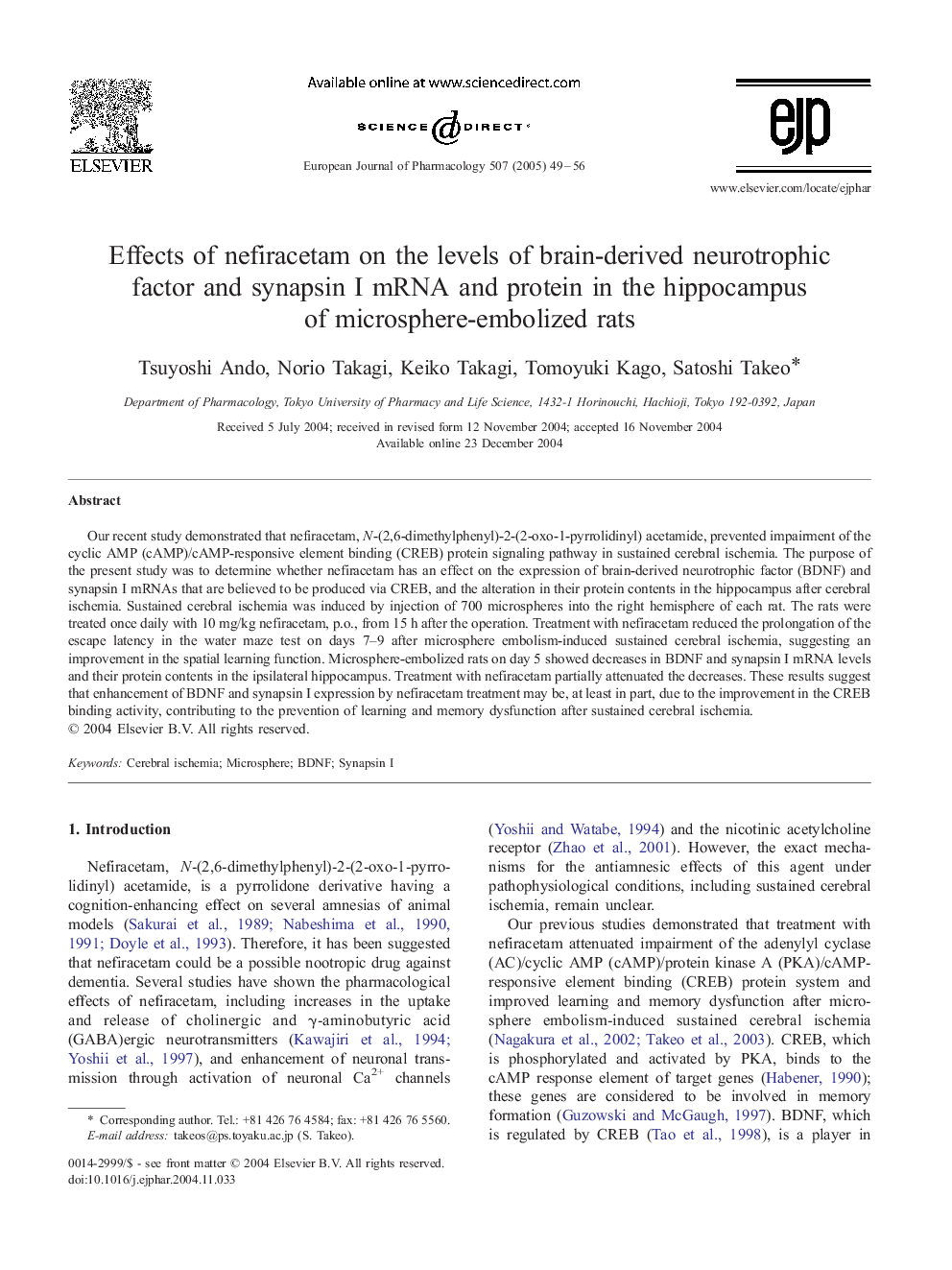| Article ID | Journal | Published Year | Pages | File Type |
|---|---|---|---|---|
| 9921556 | European Journal of Pharmacology | 2005 | 8 Pages |
Abstract
Our recent study demonstrated that nefiracetam, N-(2,6-dimethylphenyl)-2-(2-oxo-1-pyrrolidinyl) acetamide, prevented impairment of the cyclic AMP (cAMP)/cAMP-responsive element binding (CREB) protein signaling pathway in sustained cerebral ischemia. The purpose of the present study was to determine whether nefiracetam has an effect on the expression of brain-derived neurotrophic factor (BDNF) and synapsin I mRNAs that are believed to be produced via CREB, and the alteration in their protein contents in the hippocampus after cerebral ischemia. Sustained cerebral ischemia was induced by injection of 700 microspheres into the right hemisphere of each rat. The rats were treated once daily with 10 mg/kg nefiracetam, p.o., from 15 h after the operation. Treatment with nefiracetam reduced the prolongation of the escape latency in the water maze test on days 7-9 after microsphere embolism-induced sustained cerebral ischemia, suggesting an improvement in the spatial learning function. Microsphere-embolized rats on day 5 showed decreases in BDNF and synapsin I mRNA levels and their protein contents in the ipsilateral hippocampus. Treatment with nefiracetam partially attenuated the decreases. These results suggest that enhancement of BDNF and synapsin I expression by nefiracetam treatment may be, at least in part, due to the improvement in the CREB binding activity, contributing to the prevention of learning and memory dysfunction after sustained cerebral ischemia.
Related Topics
Life Sciences
Neuroscience
Cellular and Molecular Neuroscience
Authors
Tsuyoshi Ando, Norio Takagi, Keiko Takagi, Tomoyuki Kago, Satoshi Takeo,
